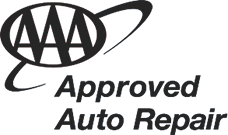Tire Rotation & Balance
- Auto Repair – Service – Maintenance
- Tune-Ups
- Emission Test Tune-Ups
- Diagnostics
- 4 Yr / 48k Warranty
- ASE Certified Technicians
- AAA Recommended
Tires Nashville, TN
Need tire rotation & balance? We pride ourselves on serving the community and providing quality service to Nashville, TN. Let us know how we can help you. Call and speak with us about balance & rotation today!
Tire Rotation in Nashville
A good time to rotate your tires is when you get the oil changed, assuming you do that at least once a year and more often if you drive, say, more than 10,000 miles annually.
Most vehicle manufacturers recommend that the tires be rotated on the same schedule as oil changes. In most cases that means every 7,500 miles or six months, though some have stretched the oil-change interval to 10,000 miles, such as on many Fords, Volkswagens and Toyotas. BMW allows up to 15,000 miles between oil changes, but that is too long to wait to rotate the tires.
Unless you drive fewer than about 7,500 miles per year, you should probably rotate tires every six months or so.
The tires mounted on the drive wheels of any vehicle perform extra duty because they apply the power to the pavement. On front-wheel-drive vehicles that is amplified by the weight of the engine and transmission, and because the front tires do most of the work in turns. Rotating the tires between front and rear a couple of times a year spreads out the burden so they wear evenly. Automakers that offer all-wheel-drive cars also recommend rotating tires. Subaru, for example, says to do it every 7,500 miles or 7.5 months, whichever comes first.
Symptoms of Tire Imbalance
An out-of-balance tire and wheel will typically create a vibration or shake that becomes progressively worse as the vehicle speed increases. The speed at which the vibration first becomes apparent will vary depending on the size and weight of the tires and wheels, the size and weight of the vehicle, the sensitivity of the steering and suspension and the amount of imbalance, but usually starts at 40 to 50 mph and increases in intensity as the speed goes up.
Tire/Wheel Balance Diagnosis
If you have a tire/wheel vibration problem, take your vehicle to a tire store or repair facility that has a tire balancing machine. Have them check the balance of all four wheels and tires, and have any wheels that are out-of-balance rebalance as needed.
It is also important to remember that speed-sensitive vibrations can also be caused by radial (vertical) or lateral (sideways) runout in a tire, wheel or hub. Loose, worn or damaged wheel bearings as well as certain kinds of tread wear can also cause vibrations. So too can an out-of-balance or out-of-phase rear-wheel-drive driveshaft (FWD shafts usually do not rotate fast enough to cause vibration problems.)
When troubleshooting the cause of a speed-sensitive vibration, start by inspecting the tires and wheels. Look for evidence of missing weights, mud or dirt packed in the back of the rim or debris embedded in the tread that could create an imbalance.
Note the amount of wear on the tread. If the tires are more than 50 percent worn, chances are they have not been rebalanced since they were new. Be sure to measure tread depth at several points around the circumference of the tire. This will tell you if the tread is wearing evenly and if the depth is equal. A difference of more than about 1/16 inch would indicate an out-of-round condition.
Tire/Wheel Runout Can Cause Vibrations
Most tires should probably have less than .050 inch of radial runout, and some even less depending on how sensitive the vehicle’s steering and suspension (and driver) are to vibration. Runout problems can often be corrected by “match-mounting” the tire on the wheel (rotating the tire so the tire high spot is over the rim low spot). Also, rotate and wiggle each wheel by hand to check for excessive play or noise from the wheel bearings.
Tires can sometimes go out of balance almost immediately if the tire slips (turns) on its rim. This can happen if someone uses a lubricant such as silicone on the tire bead or rim when mounting tires on aluminum alloy wheels. Hard braking or acceleration can cause the tire to rotate on the rim, destroying the original balance.
Wheel Balancing Equipment
To accurately balance tires and wheels, an electronic spin balancer that can achieve both static (at rest) and dynamic (in motion) balance should be used. Old fashioned bubble balancers can do a decent job of achieving static balance, but dynamic balance can only be achieved with a spin balancer. This is especially important with today’s larger, wider, heavier tire and rim packages and absolutely essential for run-flat tires that have thicker, stiffer sidewalls.
Some balancing equipment is capable of detecting runout problems in the tire and wheel assembly as well as vibrations in sidewall stiffness that may cause vibrations. One such balancer applies a roller against the tire to simulate a load on the tire as it rotates. If the unit detects a stiff spot in the sidewall, it tells the operator how to reposition the tire on the wheel so the stiffest part of the tire will be over the lowest point on the rim.
Most balancers today have self-calibrating electronics with accuracy to hundredths of an ounce (or tenths of a gram). Graphical displays also make information easier to read and understand, and reduce the chance of making a mistake. Automatic data entry for wheel width and diameter on some balancers also saves time.
Most balancers today operate at lower speeds. This helps extend motor life and reduces cycle times as well as risk to the operator. Older balancers typically had to spin a wheel fairly fast (about 500 rpm, or the equivalent of 55 to 60 mph) to generate a usable signal. But the more sensitive electronics in newer balancers are able to pick up vibrations at much lower speeds (only 100 rpm, or 10 to 15 mph).
So, the next time you encounter a speed-related vibration, you may have an out-of-balance tire/wheel assembly, or too much runout in the tire or wheel.




